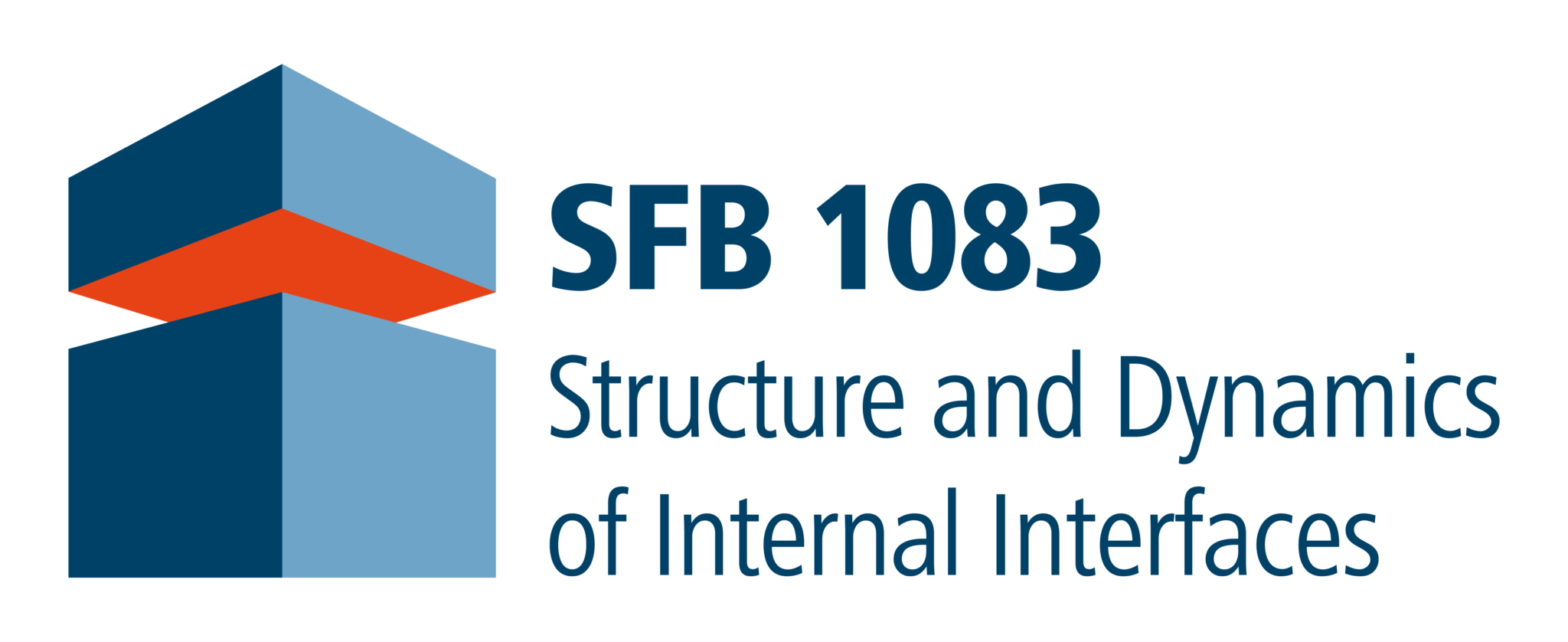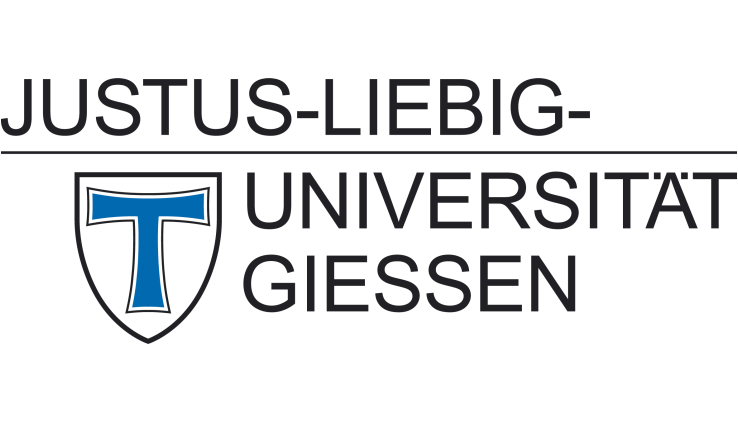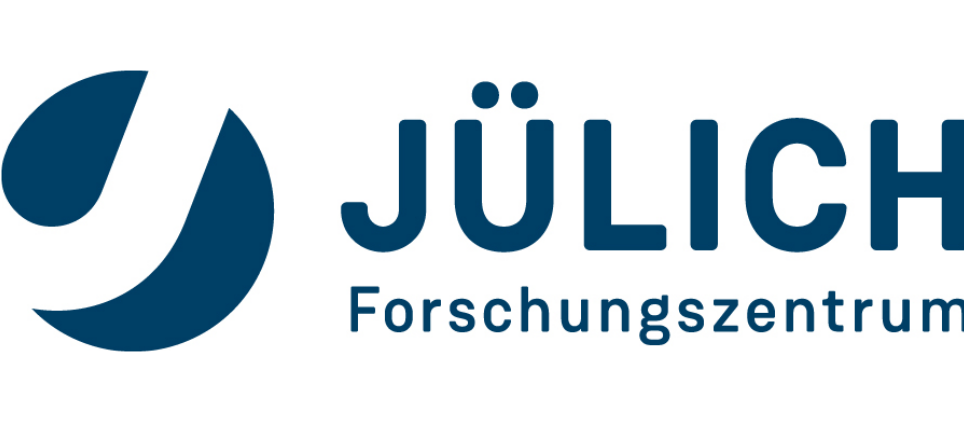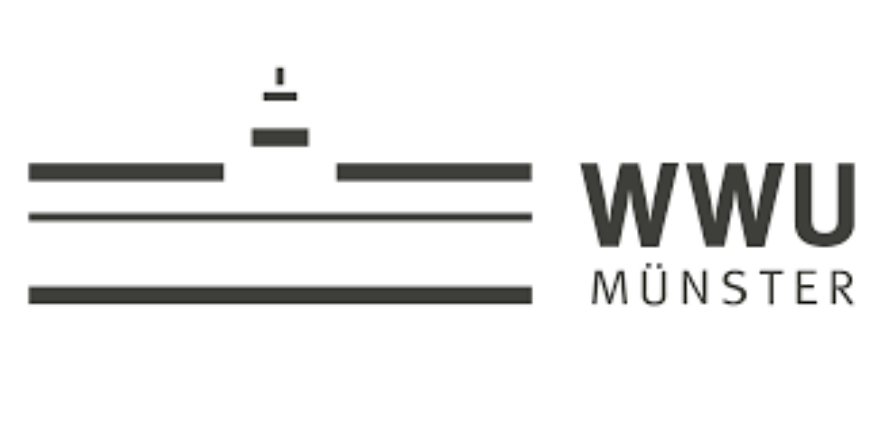News
Last News Items
 Unveiling the Effects of Hydroxyl-Induced Trap States on the Charge Transport in p- and n-Channel Organic Field-Effect Transistors through Variable-Temperature Characterization – Publication by A212. June 2025 - 09:57
Unveiling the Effects of Hydroxyl-Induced Trap States on the Charge Transport in p- and n-Channel Organic Field-Effect Transistors through Variable-Temperature Characterization – Publication by A212. June 2025 - 09:57 Detection of an interface-specific coherent phonon mode – Publication by B5 (Höfer/Mette), A1 (Stolz) and A5 (Volz) in Advanced Materials Interfaces9. February 2025 - 11:29
Detection of an interface-specific coherent phonon mode – Publication by B5 (Höfer/Mette), A1 (Stolz) and A5 (Volz) in Advanced Materials Interfaces9. February 2025 - 11:29 Ultrafast switching of trions in 2D materials by terahertz photons – Publication by B9 (Malic) in Nature Photonics23. September 2024 - 09:32
Ultrafast switching of trions in 2D materials by terahertz photons – Publication by B9 (Malic) in Nature Photonics23. September 2024 - 09:32 The International Conference on Internal Interfaces, ICII-24, was held in Marburg19. September 2024 - 14:14
The International Conference on Internal Interfaces, ICII-24, was held in Marburg19. September 2024 - 14:14 35. Erfinderlabor: Scientific curiosity of the next Generation4. June 2024 - 08:55
35. Erfinderlabor: Scientific curiosity of the next Generation4. June 2024 - 08:55 Synthesis of 2D Gallium Sulfide with Ultraviolet Emission by MOCVD – Publication by A4 (Gottfried), A5 (Volz), A14 (Volz) and B2 (Chatterjee) in Small25. May 2024 - 15:04
Synthesis of 2D Gallium Sulfide with Ultraviolet Emission by MOCVD – Publication by A4 (Gottfried), A5 (Volz), A14 (Volz) and B2 (Chatterjee) in Small25. May 2024 - 15:04 Probing electron-hole Coulomb correlations in the exciton landscape of a twisted semiconductor heterostructure – Publication by B9 (Malic) in Science Advances7. February 2024 - 12:00
Probing electron-hole Coulomb correlations in the exciton landscape of a twisted semiconductor heterostructure – Publication by B9 (Malic) in Science Advances7. February 2024 - 12:00 Heteroepitaxy in Organic/TMD Hybrids and Challenge to Achieve it for TMD Monolayers: The Case of Pentacene on WS2 and WSe2 – Publication by A2 and B58. January 2024 - 10:06
Heteroepitaxy in Organic/TMD Hybrids and Challenge to Achieve it for TMD Monolayers: The Case of Pentacene on WS2 and WSe2 – Publication by A2 and B58. January 2024 - 10:06 Layer-by-layer deposition of organic molecules controlled by selective click reactions – Publication by A8 (Koert/Dürr) in Chemistry of Materials 23. December 2023 - 14:48
Layer-by-layer deposition of organic molecules controlled by selective click reactions – Publication by A8 (Koert/Dürr) in Chemistry of Materials 23. December 2023 - 14:48 Enhanced Circular Dichroism and Polarized Emission in an Achiral, Low Band Gap Bismuth Iodide Perovskite Derivative5. October 2023 - 11:25
Enhanced Circular Dichroism and Polarized Emission in an Achiral, Low Band Gap Bismuth Iodide Perovskite Derivative5. October 2023 - 11:25







Dr. Philip Klement (B2 & B13) receives the dissertation prize of the Justus-Liebig-Universität Gießen
/in News /by sfb1083We congratulate Dr. Philip Klement on receiving the 2021/22 dissertation prize of the Justus-Liebig-Universität Gießen in the category natural sciences for his excellent dissertation.
Prof. Martin Kramer (r.) and Prof. Volker Wissemann (m.) congratulate Dr. Philip Klement (l.). Photo: JLU / Roland Duss
Philip Klement advanced the understanding of interfaces by his studies on the influence between materials and their environment. Interfaces ‒ junctions between materials ‒ are crucial for the design and performance of modern electronic devices. The impact of interfaces on the materials properties increases continuously as structures become smaller.
In his dissertation “Interface Phenomena in Two-Dimensional Materials” Philip Klement combined the dynamic and highly competitive research areas of two-dimensional materials and organic-inorganic perovskites to gain innovative insights. In his central work, he discovered free-standing, single layers of an organic-inorganic mixed crystal ‒ something not deemed feasible before. Further, he discovered the thickness dependence of the emission wavelength of this material ‒ an effect which was to date unknown. These results may enable the facile color tuning in next-generation efficient and sustainable lighting and display technologies.
Philip Klement continues to explore these new developments and opportunities as a member of the SFB projects B2 (Chatterjee) & B13 (Chatterjee/Volz), and in close collaboration with A15 (Heine).
Please see the coverage of the award ceremony for more impressions and a recent audio interview of Dr. Klement and Prof. Chatterjee for more details of their research (both in German).
Orbital Cinema and Cyclacenes: European Research Council awards two ERC Synergy Grants to SFB 1083 members
/in News /by sfb1083The European Research Council (ERC) awarded two Synergy Grant to the SFB-related projects “Photoemission Orbital Cinematography: An ultrafast wave function lab” (Orbital Cinema) and “Tackling the Cyclacene Challenge” (TACY).
The ERC has awarded two Synergy Grants to Michael Gottfried, Ulrich Höfer, Stefan Tautz, and collaborators, for projects that built on work in SFB 1083.
Foto: Jan Hosan
Michael Gottfried, Vice Speaker of SFB 1083, receives around 4.5 million euros for “Tackling the Cyclacene Challenge” (TACY). Cyclacenes are an elusive class of ring-shaped carbon-based molecules with unique electronic and magnetic properties. They are expected to provide fundamental insight into the chemistry of strained aromatic systems and to find applications in organic electronic and spintronics. The TACY team, which includes Michael Mastalerz from Heidelberg and Holger Bettinger from Tübingen, pursues the goal of generating cyclacenes for the first time. The ERC funds this project with around 11 million euros.
Foto: Jan Hosan
The second Synergy Grant was awarded to Ulrich Höfer and Stefan Tautz, project leaders of SFB 1083, and their collaborators Rupert Huber from Regensburg and Peter Puschnig from Graz. Ulrich Koert and Jens Güdde, two other SFB 1083 project leaders, are associated partners. Their project “Photoemission Orbital Cinematography: An ultrafast wave function lab”, in short “Orbital Cinema”, aims to reach sub-cycle time resolution in orbital videography and to actively shape and functionalize molecular orbitals with lightwaves. This project is funded with up to 11.4 million euros.
For further information about these projects, see the following:
Leopoldina awards Greve Prize to Kerstin Volz and Jürgen Janek
/in News /by sfb1083Physicist Kerstin Volz and physical chemist Jürgen Janek will receive the 2022 Greve Prize from the German National Academy of Sciences Leopoldina for their fundamental insights into rechargeable batteries.
Image: Rolf K. Wegst (l.) | Christian Stein/Philipps-Universität Marburg (r.).
Kerstin Volz, Speaker of the SFB 1083 and project leader of A5, A14 und B13, and Leopoldina member Jürgen Janek, Director of the Center for Materials Research at the Justus Liebig University Giessen, investigate electrochemical energy storage devices and novel materials therefore. Their research has helped to improve high-performance batteries and develop new, resource-saving electrochemical energy storage concepts.
In their collaborative work, Kerstin Volz and Jürgen Janek investigate processes in solid-state batteries and structural changes during operation. Using a combination of electron microscopic and electrochemical methods they have managed, for example, to shed light on aging phenomena which lead to reductions in battery capacity.
The German National Academy of Science Leopoldina’s Greve Prize is awarded to scientists or research teams in Germany. The newly established prize is awarded every two years on a specific topic and honors outstanding research achievements in the natural sciences/medicine and engineering sciences. This year, the topic was the scientific foundations of sustainable energy supply. The prize is endowed with 250,000 euros, with funds from the Greve Foundation.
For further information, please see the press release by the Leopoldina (in German and English) as well as by the Philipps University Marburg (in German).
Contact
Prof. Dr. Kerstin Volz
Philipps-Universität Marburg
SFB 1083 spokeswoman
Tel.: 06421 28-22297
EMAIL
F-Center Mediated Growth of Patterned Organic Semiconductor Films on Alkali Halides – Publication by A2 (Witte)
/in News /by sfb1083In a combined experimental and theoretical study, the groups of Gregor Witte (A2) and Jérôme Cornil from the University Mons present a new approach of patterning organic semiconductor films with simultaneous molecular orientation control based on an electrostatic stabilization at the film/substrate interface in the presence of F-centers in alkali halide substrates created by controlled electron irradiation.
Scheme of the process chain that allows transfer of patterned organic films to any non-water-soluble substrate. Reprinted with permission from ACS Appl. Mater. Interfaces 2022. Copyright 2022 American Chemical Society.
A key problem in organic electronics remains the lateral patterning and structuring of organic films for device applications since photolithography is not applicable due to the lack of chemical robustness of the organic materials in the etching process. Therefore, alternative approaches are necessary for the patterning of organic films.
In this study, Darius Günder et al. demonstrate that electron irradiation of KCl(100) substrates induces surface localized F-centers (halide vacancies) that strongly influence the molecular orientation and lateral structure of subsequently grown organic films. By combining AFM, SEM and XRD measurements they show for the case of dinaphtothienothiophene (DNTT) that molecules adopt a recumbent molecular orientation and form elongated fibers while hexagonally shaped islands with upright orientation are present on pristine KCl. Interestingly, both morphologies exhibit epitaxial alignments that are understood by higher-order commensurabilities. A complementary DFT-based theoretical analysis in the group of Jérôme Cornil identified electrostatic interactions between F-centers and interfacial DNTT molecules as origin of the different film morphologies. Furthermore, shadow masks or electron beam lithography techniques also allow spatially selective surface irradiation to generate patterns of F-centers, and thus enable lateral structuring of DNTT films.
Finally, it could be shown that due to the water solubility of the alkali halide growth templates, the patterned organic films can also be transferred to other substrates, including amorphous elastomeric plastic substrates, while the lateral and orientational order remain fully intact, hence underlining the great potential of this new patterning method for device applications.
Publication
D. Günder, V. Diez-Cabanes, A. Huttner, T. Breuer, V. Lemaur, J. Cornil, G. Witte
F-Center-Mediated Growth of Patterned Organic Semiconductor Films on Alkali Halides
ACS Appl. Mater. Interfaces (2022) DOI:10.1021/acsami.2c13934
Contact
Prof. Dr. Gregor Witte
Philipps-Universität Marburg
SFB 1083 project A2
Tel.: 06421 28-21384
EMAIL
Obituary for Prof. Dr. Stephan W. Koch – Nachruf für Prof. Dr. Stephan W. Koch
/in News /by sfb1083Die Mitglieder des Sonderforschungsbereichs 1083 „Struktur und Dynamik innerer Grenzflächen“ trauern um Prof. Dr. Stephan W. Koch, der im September 2022 im Alter von 69 Jahren verstorben ist.
Foto: Tim van de Bovenkamp; Copyright: SFB 1083
Stephan W. Koch promovierte 1979 in Frankfurt und war von 1977 bis 1984 wissenschaftlicher Mitarbeiter am Institut für Theoretische Physik der Universität Frankfurt, an dem er auch bereits 1983 habilitierte. Nach drei Jahren als Stipendiat der F. Thyssen-Stiftung und der DFG im Rahmen eines Heisenberg-Stipendiums ging er 1986 als Associate Professor an das Physics Department and Optical Sciences Center der University of Arizona in Tucson, wo er 1989 zum Full Professor ernannt wurde. 1993 kam er dann nach Marburg und übernahm in Nachfolge von Otfried Madelung und Stefan Schmitt-Rink den Lehrstuhl für Theoretische Festkörperphysik an der Philipps-Universität Marburg, wobei er weiterhin Adjunct Professor an der University of Arizona blieb. Diesen beiden Stationen blieb er bis zu seiner Pensionierung treu.
Seine Forschungsschwerpunkte lagen auf dem Gebiet der theoretischen Festkörperphysik. Besonders interessierten ihn hier die theoretischen Grundlagen der Wechselwirkung von Licht mit Materie in Halbleitermaterialien sowie in Laserstrukturen und Mikro-Resonatoren.
Stephan W. Koch war ein herausragender, international hoch angesehener Wissenschaftler. Durch seine Arbeiten zur Vielteilchenphysik und den optoelektronischen Eigenschaften von Halbleitern trug er maßgeblich zum heutigen Verständnis von Festkörpern und insbesondere Halbleiternanostrukturen bei. Für seine Leistungen wurde er 1997 mit dem Leibniz-Preis der Deutschen Forschungsgemeinschaft (DFG) sowie 1999 mit dem Max-Planck-Forschungspreis der Alexander-von-Humboldt-Stiftung und der Max-Planck-Gesellschaft ausgezeichnet.
Stephan Koch hat die Forschungslandschaft der Marburger Physik entscheidend mitgeprägt. Von 1995 bis 2001 leitete er den erfolgreichen SFB 383 „Disorder on mesoscopic scales“ und war seit 2013 Mitglied des SFB 1083 „Structure and dynamics of internal interfaces“.
Stephan Koch verstand es, seine vielen Schülerinnen und Schüler für die Halbleiterphysik zu begeistern. Viele von Ihnen sind heute an Hochschulen und Forschungseinrichtungen tätig.
Mit großer Dankbarkeit und Anerkennung werden wir uns an ihn als einen stets aufgeschlossenen Kollegen erinnern, der in seinem gesamten Schaffen immer wieder neue Impulse gegeben und Zeichen gesetzt hat.
Unser tiefes Mitgefühl und unsere Anteilnahme gelten seiner Ehefrau und seinen Angehörigen.
Wir werden ihn vermissen.
Formation of Moiré Interlayer Excitons in Space and Time – Publication by B9 (Malic) in Nature
/in News /by sfb1083A large research team including Ermin Malic and coworkers observed the formation of a “dark” moiré interlayer exciton for the first time
A large number of so-called optically dark excitons form between two twisted layers of tungsten diselenide (top) and molybdenum disulfide (bottom) after optical excitation. (Reprinted with permission from Nature, link see below)
Atomically thin structures made of two-dimensional semiconductor materials are promising candidates for future devices in electronics, optoelectronics and photovoltaics. The properties of these semiconductors can be controlled by stacking atomically thin layers on top of each other. However, the angle of rotation in the structure of the semiconductors can be adjusted as desired, and this angle of rotation is of interest for the production of novel solar cells. Typical experimental approaches have only indirect access to the moiré interlayer excitons and are blind to the ‘dark’ excitons.
An international research team including Ermin Malic and coworkers from the SFB succeeded in directly visualizing so-called dark moiré interlayer excitons by using time-resolved ARPES measurements combined with microscopic many-particle theory. The researchers show how the time-resolved momentum microscopy provides deepest microscopic insights into these technologically relevant questions.
These results not only provide a fundamental insight into the formation of dark moiré interlayer excitons, but also open up a new perspective to study the optoelectronic properties of these new and fascinating materials, e.g., the signature of the moiré potential and the influence of the combined properties of the two twisted semiconductor layers.
For further information, please see the press release by the university of Göttingen (in German).
Publication
D. Schmitt, J.P. Bange, W. Bennecke, A.A. Al Mutairi, G. Meneghini, K. Watanabe, T. Taniguchi, D. Steil, D.R. Luke, R.T. Weitz, S. Steil, G.S.M. Jansen, S. Brem, E. Malic, S. Hofmann, M. Reutzel, S. Mathias
Formation of moiré interlayer excitons in space and time
Nature 608 (2022) 499 DOI:10.1038/s41586-022-04977-7
Contact
Prof. Dr. Ermin Malic
Philipps-Universität Marburg
SFB 1083 project B9
Tel.: 06421 28-22640
EMAIL
Topological Stone–Wales Defects Enhance Bonding and Electronic Coupling at the Graphene/Metal Interface – Publication by A4 (Gottfried) and A6 (Tonner) in ACS Nano
/in News /by sfb1083Benedikt Klein and coworkers of SFB 1083, together with external collaborators, have gained new insight into interfacial interactions of Stone-Wales graphene defects by using molecular models.
Graphene is an astonishing two-dimensional material with diverse and technologically important properties. However, these properties are heavily dependent on topological defects, which have a direct impact on the graphene/metal interface. A common defect is the Stone-Wales (SW) defect, consisting of two five- and two seven-membered rings resulting in a non-alternating bonding situation. Researchers of the SFB 1083 projects A4 (Gottfried) and A6 (Tonner) investigated the interface between a SW defect and a metal by mimicking the defect with the molecule azupyrene. Pyrene was used as a model for defect-free graphene of the same size as azupyrene. The experiments were complemented by extensive modelling of the graphene-embedded defects.
Figure: Graphene/metal interface with typical topological defect. The local interaction of a topological S–W graphene defect with a metal surface is mimicked by azupyrene, which allow the application of a wide range of experimental techniques. Copyright 2022 American Chemical Society.
In the present work, it was shown by a multi-technique approach (XPS/UPS, NIXSW, NEXAFS, TPD, LT-AFM, DFT) that the embedded defects, modelled by azupyrene, undergo enhanced bonding and electron transfer with a Cu(111) surface. This indicated by increased bond energies of 68 kJ/mol, by 0.9 Å reduced bond distances and enhanced charge transfer. The consistent experimental results were corroborated by DFT calculations.
The defect-induced enhanced electronic coupling at the graphene/metal interface is expected to have significant impact on the performance of (opto-)electronics, e.g., by increasing charge injection rates. Tailoring the topological structure of graphene layer may result in the development of new or imprived devices.
Publication
B.P. Klein, A. Ihle, S.R. Kachel, L. Ruppenthal, S.J. Hall, L. Sattler, S.M. Weber, J. Herritsch, A. Jaegermann, D. Ebeling, R.J. Maurer, G. Hilt, R. Tonner-Zech, A. Schirmeisen, J.M. Gottfried
Topological Stone–Wales Defects Enhance Bonding and Electronic Coupling at the Graphene/Metal Interface
ACS Nano (2022) DOI:10.1021/acsnano.2c01952
Contact
Prof. Dr. J. Michael Gottfried
Philipps-Universität Marburg
SFB 1083 project A4
Tel.: 06421 28-22541
EMAIL
On the Role of Collective Electrostatic Effects in Electronic Level Pinning and Work Function Changes by Molecular Adlayers: The Case of Partially Fluorinated DNTTs Adsorbed Flat-Lying on Various Metals and Hetero-Structures – Publication by A2 (Witte) and A8 (Koert)
/in News /by sfb1083In a new publication in Advanced Materials Interfaces, the groups of Gregor Witte (A2), Ulrich Koert (A8) as well as Jérôme Cornil from the University of Mons report on the formation of an internal interface dipole at a metal/2D metal/organic hetero-interface, which can be modified by the outer organic monolayer.
Schematic representation of the outer and internal interface dipoles at the FxDNTT/cesium/copper hetero-interface (Image: Maximilian Dreher, CC BY-NC-ND 4.0).
The use of organic contact layers is a versatile tool to control the work function of metal electrodes. While partial fluorination of robust organic molecules leads to a significant shift of their frontier energy levels in the isolated molecules, this effect can be wiped out for organic films adsorbed on high work function metal substrates leading to an equalization of the corresponding HOMO levels. Consequently, also the work function shift is equalized in the condensed phase, which is often referred to as HOMO (resp. LUMO) level pinning. Especially the LUMO level pinning has been reported only on a theoretical level in literature yet.
By using partially fluorinated DNTTs, which were synthesized by project A8 and exhibit such a HOMO level pinning on high work function noble metals, the group of Jérôme Cornil (Mons, Belgium) demonstrated that a LUMO level pinning also exists on low work function Cs(110) surfaces on a theoretical level. To face low work function surfaces experimentally, Maximilian Dreher and coworkers used atomically thin cesium layers that grow epitaxial on Cu(100) single crystals and provide more inert, low work function surfaces. In contrast to the expectation, this copper/cesium/organic hetero-stack reveals no LUMO pinning effect. Complementary DFT calculations demonstrate, that the contributions prevailing on the work function shift can be separated into (i) an outer interface dipole between the organic layer and the 2D cesium layer and (ii) an inner, buried interface dipole at the metal/cesium interface. While the outer interface dipole is again equalized for the different FxDNTT species, the buried interface dipole is modulated dependent on the degree of fluorination of the molecules.
Such a sandwich hetero-interface provides new possibilities to effectively tailor contact layers between metal electrodes and active organic layers improving their energy level alignment and emphasizes the importance of internal interfaces.
Publication
M. Dreher, D. Cornil, M. W. Tripp, U. Koert, J. Cornil, G. Witte
On the Role of Collective Electrostatic Effects in Electronic Level Pinning and Work Function Changes by Molecular Adlayers: The Case of Partially Fluorinated DNTTs Adsorbed Flat-Lying on Various Metals and Hetero-Structures
Adv. Mater. Interfaces (2022) DOI:10.1002/admi.202200361
Contact
Prof. Dr. Gregor Witte
Philipps-Universität Marburg
SFB 1083 project A2
Tel.: 06421 28-21384
EMAIL
German Science and Humanities Council recommends research building for materials sciences
/in News /by sfb1083A research building together with a modern transmission electron microscope will be established on the Lahnberge campus of Philipps-University Marburg
Dr. Andreas Beyer, a researcher in SFB 1083, operates a Transmission Electron Microscope, which provides important insights in the development of new materials.
On the Lahnberge Campus, a new research building for a transmission electron microscope for the investigation of novel materials will be established. The German Science and Humanities Council gave its recommendation for the project, which is called ATEMMA (Advanced Transmission Electron Microscopy, Marburg). ATEMMA comprises a volume of 10 Mio €. This is divided into 4 Mio € for the building itself as well as 6 Mio € for the new (S)TEM.
ATEMMA strengthens the focus on material sciences and especially on interfaces at the Philipps-University Marburg and paves the way for high-quality research, e.g., on new materials used for communication and energy technologies, as these represent extremely important topics in our today’s society. The new research lab combines structural characterization with the development of new methods. This combination will boost the research on novel materials also with respect to device applications.
ATEMMA will be used jointly by different groups from physics, chemistry and material sciences distributed over the Philipps-University Marburg as well as Justus-Liebig-University Giessen and the Forschungscampus Mittelhessen. Several of the groups are also part of the SFB 1083, highlighting the importance of interface-related research for ATEMMA.
For further information, please see the press release by the Philipps-Universität Marburg (in German).
Update (12.07.2022): ATEMMA was now officially granted and is scheduled to go into operation in 2026. Again, please see the press release by the Philipps-Universität Marburg for further infromation (in German).
Contact
Prof. Dr. Kerstin Volz
Department of Physics and Materials Science Center
Philipps-Universität Marburg
Tel.: 06421 28-22297
EMAIL
Dr. Gerson Mette (B5) completed his habilitation at the Philipps-University Marburg
/in News /by sfb1083We congratulate Dr. Gerson Mette, former PI of SFB project B5, on completing his habilitation in experimental physics at the Philipps-University Marburg.
With his broad background in surface science and laser spectroscopy, he has set up new SHG imaging microscopy for pump-probe experiments of van der Waals heterostructures and explored the dynamics of charge-transfer processes across interfaces of 2D materials in well-defined environments. Furthermore, he explored the influence of electronic interface states on the ultrafast charge-transfer at buried GaP/Si interfaces.
In February 2022 he gave his habilitation talk on “How big is the proton? The proton radius puzzle” and completed his habilitation in experimental physics. The members of the SFB thank Dr. Mette for his work and commitment for the SFB 1083 and wish him all the best on his future career path.